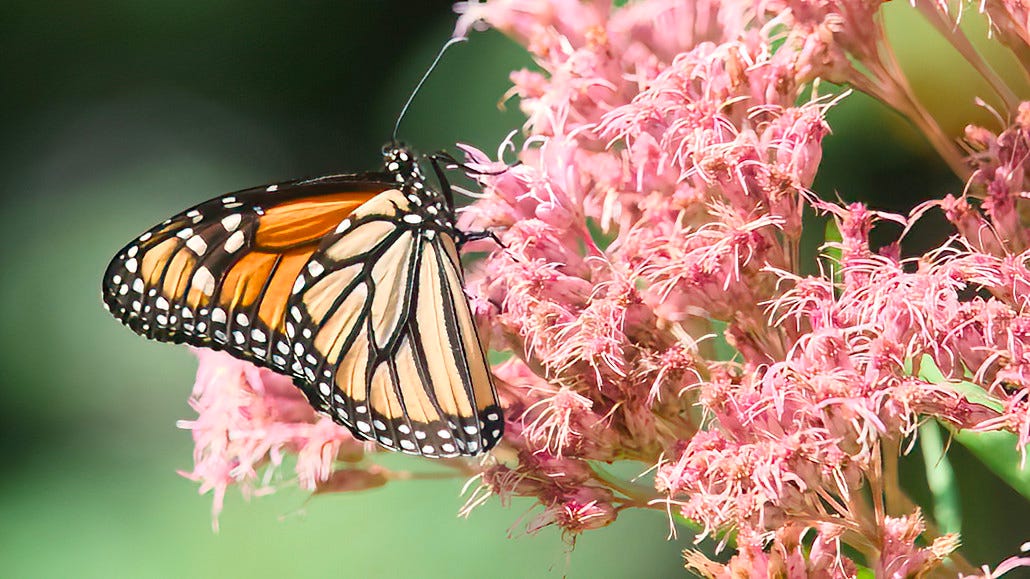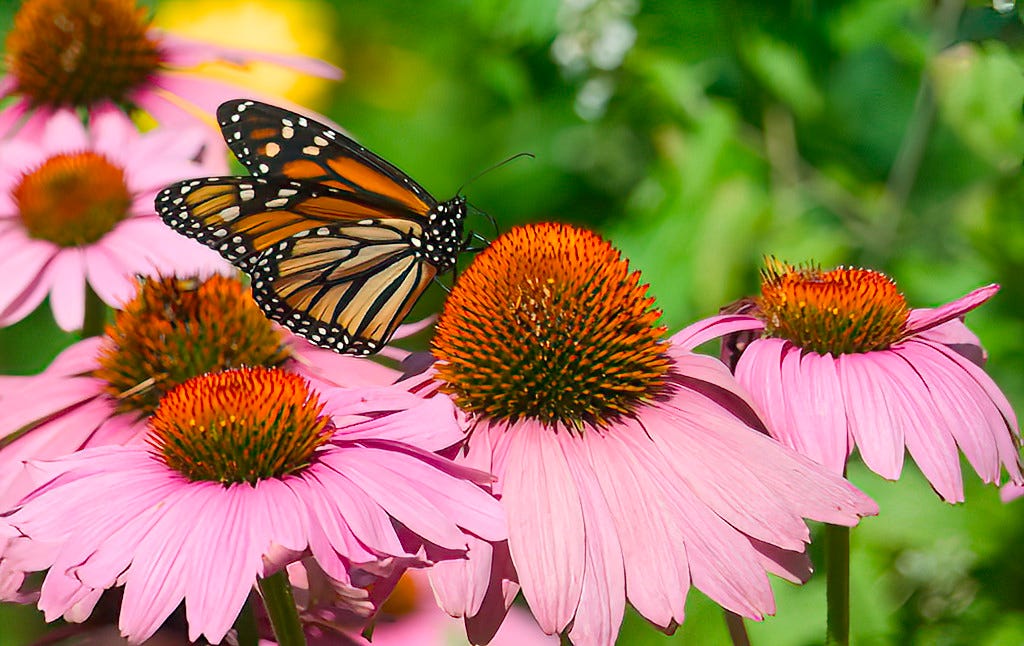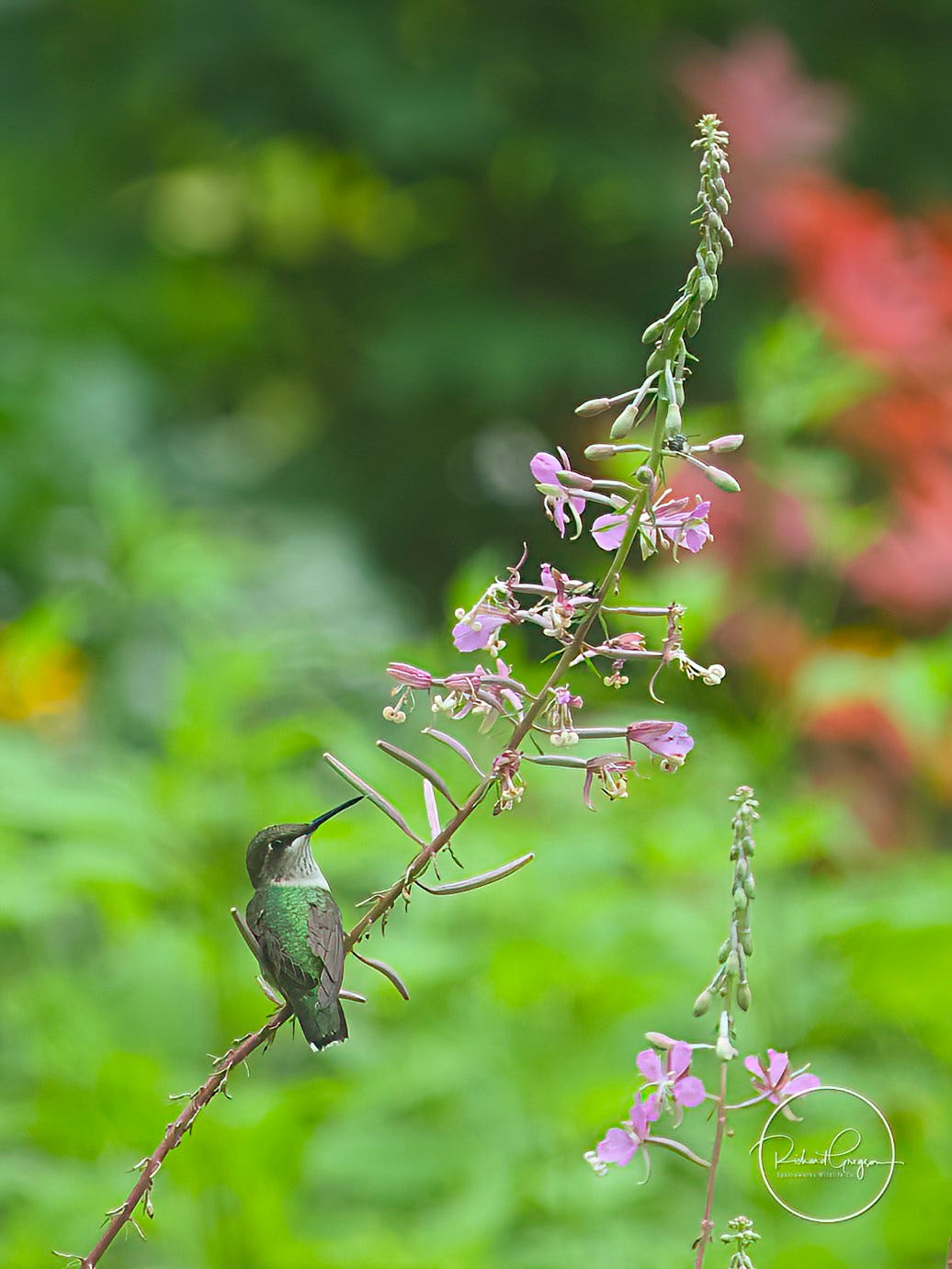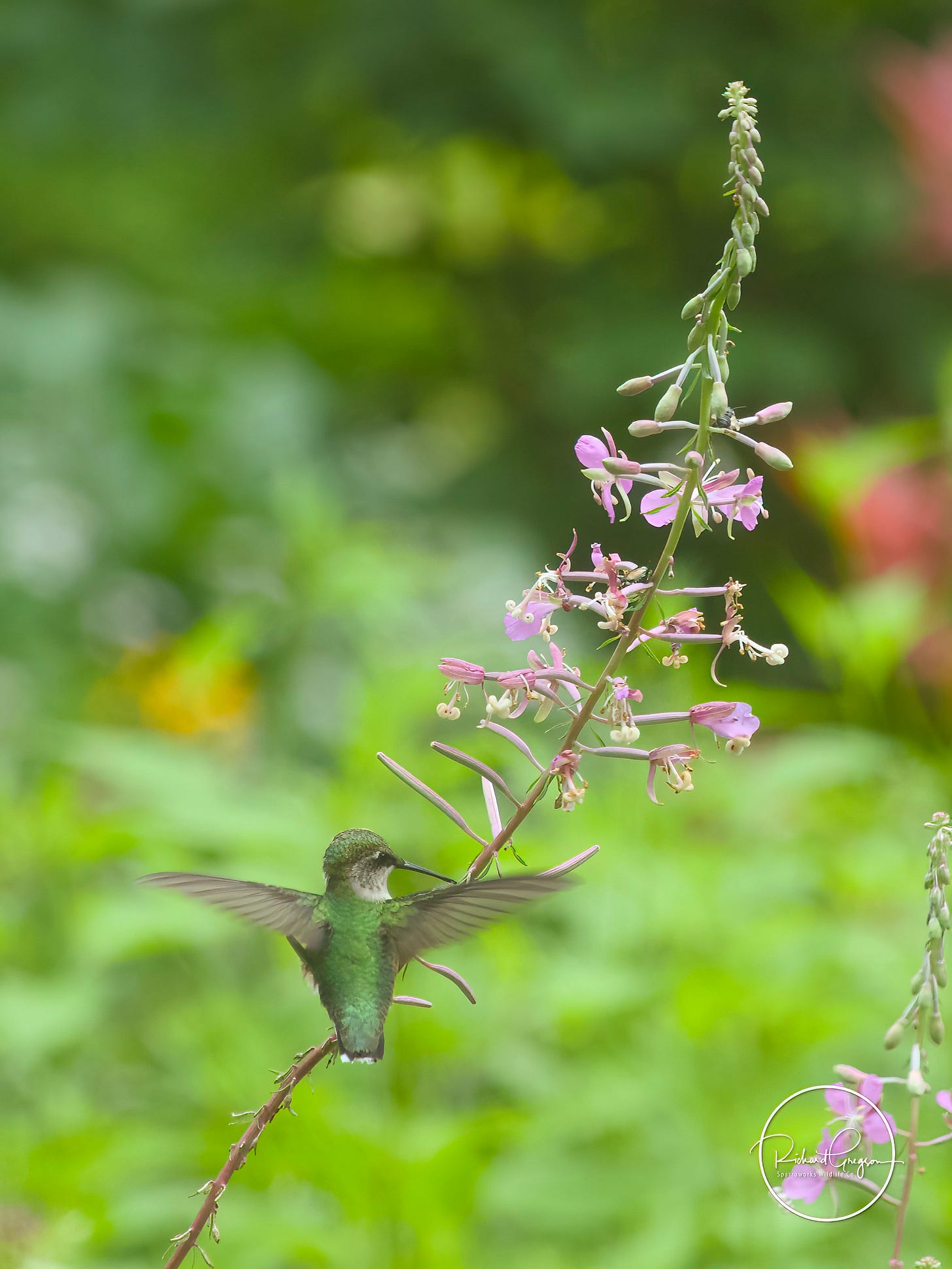CONTENTS
Wasps and old logs
Big Backyard Bioblitz
Monarch butterflies are here
Fireweed Hummingbird
Birding - is it a matter of privilege?
Wasps …
Every year we have at least one wasp nest in the garden. Last year it was inside an unopened garden shade umbrella and revealed itself very rapidly as I tried to open it. The year before it was in a compost heap that I wanted to dig into. This year, thus far, I was congratulating myself that there was no sign of “our” nest and then I sat on a stone bench beside our waterfall and became aware of some movement out of the corner of my eye.
We have a wasp nest.
Wasps can be a nuisance, no question, but generally they go about their daily tasks of keeping down other pest insects and doing a bit of flower pollination on the side. Just so long as you leave their nests alone - several years ago there was a nest in a compost heap that had a four foot high enclosure inside which I was digging … J was watching at the time and said she didn’t know I could fly. I came out of there without touching the sides from a standing start - Olympic level high jump followed by a 100yd sprint. How about they have that as a “demonstration sport” in the Olympics than, heaven help us, break dancing … which apparently is being competed in Paris!
A wasp is “any insect species of the narrow-waisted suborder Apocrita of the order Hymenoptera which is neither a bee nor an ant”. So there are a good few different species that are all variants on the common wasp theme. The wasps we find moving into our garden as annual tenants, and the ones using that tunnel entrance to their log-nest, are what in North America are commonly known as Eastern Yellowjackets (Vespula maculifrons). These are in the family Vespidae and are eusocial, living together in a nest with an egg-laying queen and non-reproducing workers. In other English speaking countries Vespula sp. are known, more collectively and more simply as just wasps.
If the wasps think you, or a raccoon or anything really, is a potential threat to their nest then the workers who see you first, communicate with others by releasing an alarm pheromone that stimulates defence behaviour. This pheromone is linked to the sting apparatus and prompts attraction and attack and induces wasps around the nest entrance to fly in circles and a zigzagging flight, and then going directly towards the target, once located
Positive thinking about Wasps (thanks to the BBC):
"But every wasp is glorious," says Gavin, as he urges you to move beyond the PR spin that's got us to prefer beetles and bees instead. ”Bees are just furry wasps that turned vegetarian".
Wasps have their role in Nature and it's not to pester humans in the autumn. Ignore those "yellow jackets" getting drunk on cider in September orchards; they'll soon be gone. Wasps have very useful functions, one of which is to keep other insects in check. Every insect you can think of probably has some wasp that will attack it. If that wasn't the case, we'd almost certainly be using more pesticides than we already do on our farms.
Nearby, on some milkweed and golden rod plants a few days later, I saw some wasps (Vespula sp) that appeared to be smaller and less elongated than the ones coming and going via the tunnel in the log. Similar to, but different from the regular guys. I have been informed by a couple of knowledgeable people that this could be an Alaska Yellowjacket (Vespula alascensis). Despite the geographically specific name, this species is widespread across Canada. Either way, we have wasps. ‘Tis the season.
If you live in Canada, join in the Big Backyard BioBlitz between 1-5 August
Organised by Nature Conservancy Canada
We have participated every year since this started - it’s important, it’s fun, it’s easy and it’s educational.
Quote: This August long weekend, join thousands of BioBlitzers across the country in documenting the nature around them. All you need is a smartphone, tablet or digital camera. Just snap photos or record audio of birds, insects, plants and other creatures wherever you happen to be. Then share your observations to help scientists and environmental organizations understand and protect nature. Whether you take part for all five days or for just an hour, you’ll be making a difference.
Unlock the power of community science - Your observations will help scientists and conservation experts map species distribution across the country and monitor changes in ecosystems over time. To date, Big Backyard BioBlitz participants have recorded over 147,000 observations, documenting 7,600+ species. No backyard required. Photograph the beetles on your balcony. The buttercups in the park down the street. The beaver you encounter on your canoe trip. As long as it’s in Canada, every contribution counts. Audio recordings are also welcome.
Monarch Time Again
No need to say much about Monarch butterflies, anyone reading this will be well aware of their vulnerability and the amazing annual migration they undertake. It’s just that the adults are suddenly on the wing this week and I thought you’d like to see a couple of photographs taken a few days ago …
Fireweed Hummingbird
At this time of the year we are regularly visited by Ruby-throated Hummingbirds. Mostly at the moment this year’s youngsters starting to head south; occasionally an adult with the ruby throat. We don’t have Hummingbird-feeders but we do have a good selection of the flowers that they really love … Cuphea, Fireweed, red and lilac Monarda, Cardinal Flower being the stars of the show.
This fellow had been on the Monarda and briefly and Evening Primrose before moving on to spend quality time with some Fireweed (that’s Rose-Bay Willowherb for my British readers).
Greenbirding - is it a matter of privilege?
Eleven years ago I was “commissioned” by a US publisher (they approached me, not me them) to write a book on the subject of Greenbirding … which I duly did and thereby earned an advance that was just enough to bring me an Apple desktop computer. Very nice for me, less so for the publisher who didn’t realise what a niche subject this was and who still has not earned back the advance and started making a profit. Anyway, if it interests you, then the internet will find you a copy to read. The point of this short piece though is that I recently learned that a couple (yes, a whole two) of readers had posted reviews of my book on Goodreads - and they both liked it. Gosh.
Anyway. One of the reviews, made some constructive comments about one aspect that I had not covered and which, quite frankly never crossed my mind. Here’s what they said:
… my one issue with this book, it feels a bit... privileged. Birdwatching as a sport can be a privilege (requiring having a car, money for fuel for non essential trips, time off work, or even trips abroad...) where social inequalities play a big role, and this book could have been an opportunity to address, or at least mention, this issue, because green birding could be, not only a more environmentally responsible option, but also a more accessible one. Greenbirding, as described in this book, is still not entirely accessible. There are still huge inequalities depending on where you live in a city (for example, or having a garden), and it would have been nice to have them acknowledged. It also offers a very able-bodied view of things: biking or walking is morally better, period. I am aware that the point of this book was not to address larger issues such as economic inequalities, but having them acknowledged as valid and important would go a long way.
Interesting point. Not one that I am going to rewrite the book to address, mind you. I confess, it has never occurred to me that birding of any sort is privileged because, after all, what do you need to go birding? Just open the door and go for a walk, there are birds everywhere, albeit more in some places than others and it costs nothing to watch them. Birding isn’t supposed to be a contest. The thing is to enjoy the pastime and there is no entry fee.













Let's not politicize birdwatching! I agree with your comments on that review
I was bit recently in the hand by a wasp and my hand swelled up like crazy..a Mickey Mouse so I feel a little fearful around them now! A novel way if blocking a tunnel entrance is using Barbasol!